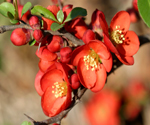Sell similar like this,2 Gallon,8 years old tree.
| $29.99 +shipping($12.99) |
These trees are cutting.
- Reduce the time to flowering.
- Shorten the breeding fruit.
- Beacuse you have a cutting tree.

Sell similar like this,2 Gallon,8 years old tree.
These trees are cutting.
|
|||
 |
Flowering Quince Flowering quince is a group of three hardy, deciduous shrubs: Native to eastern Asia, flowering quince is related to the orchard quince (Cydonia oblonga), which is grown for its edible fruit, and the Chinese quince (Pseudocydonia sinensis). Flowering quince is often referred to as Japanese quince (this name correctly refers only to C. japonica). |
|
|
||
 |
||